Truck Parking Club compiled information from the Department of Energy to illustrate EV regulations and support in states across the nation.
– chayanuphol // Shutterstock
Paxtyn Merten
States across the country are paving the way for electric vehicles. This green topic is also harshly divided along red and blue lines—which is to say, it’s heavily politicized. In North Carolina and Virginia, Republican leaders have rolled back or stunted EV initiatives adopted by Democrats.
Former President Donald Trump, the Republican nominee for the 2024 presidential election, has criticized EVs and federal EV policies under current President Joe Biden. However, he has softened his tone in recent months after receiving an endorsement from Tesla CEO Elon Musk. But if elected, Trump still intends to undo Biden-era EV incentives.
To provide an account of current EV incentives and get a sense of the impact that rollback could have, Truck Parking Club compiled information from the Department of Energy to illustrate EV regulations and support in states across the nation.
This analysis only includes public incentives and policies and does not include efforts by private entities or utility providers. It lists major incentives and laws listed on the DOE website as of Oct. 1, which in many cases incentivize other alternative fuels like biodiesel and ethanol in addition to EVs. This list intends to be comprehensive but not necessarily all-encompassing.
In the U.S., transportation is the leading source of pollution, contributing about 28% of greenhouse gas emissions in 2022. Three-quarters of Americans drive a car to work, most of them alone, and trucks transfer over 60% of freight. As a result, passenger vehicles and freight trucks offer a major opportunity to reduce pollution within the transportation sector.
California has led the charge to reduce vehicular greenhouse gas emissions, adopting legislation in 2022 that will require all new vehicles sold within its borders to be electric or plug-in hybrids by 2035. Medium- and heavy-duty vehicles like box trucks and semitrucks will follow suit in 2045. In the aftermath of this decision, 16 other states have adopted similar mandates with varying timelines and EV sales quotas.
States have adopted monetary incentives to promote EV adoption as well. Over half of the country’s states provide such incentives to install EV chargers and adopt electric or other alternative fuel buses. Meanwhile, 18 states and Washington D.C. provide monetary incentives for individual residents to purchase EVs. These efforts and others are funded in part by Volkswagen settlement funds, through which the company has paid $2 billion into EV charging infrastructure and $2.9 billion into a state mitigation trust fund in damages for cheating federal emissions tests on nearly 600,000 diesel vehicles.
On a national level, the Infrastructure Investment and Jobs Act is set to invest $7.5 billion in a network of EV charging stations, aiming to add 500,000 chargers across the country. The law includes formulaic state-by-state EV infrastructure funding each year between 2022 and 2026, estimated to total $4.2 billion in all.
Additionally, the 2022 Inflation Reduction Act provides Americans with a $7,500 tax credit for buying new EVs and $4,000 for used EVs, plus credits for commercial clean vehicles, EV charging station properties, continued development and manufacturing of clean energy and transportation technologies, and more.
Many of these efforts may face the chopping block if Trump wins this year’s presidential election. The Republican nominee has said he will not allow states to ban gas-powered cars or trucks and may end the national EV tax credit. Meanwhile, Democratic nominee and current Vice President Kamala Harris has supported EV expansion efforts from within the current administration, even casting the tie-breaking vote on the pro-EV Inflation Reduction Act.
The election is likely to have major implications for EV adoption and automobile regulation throughout the country. Read on to see current EV incentives, goals, policies, and privileges in each state, offering a deeper sense of efforts across the nation—and which states may be most affected by federal swings.
![]()
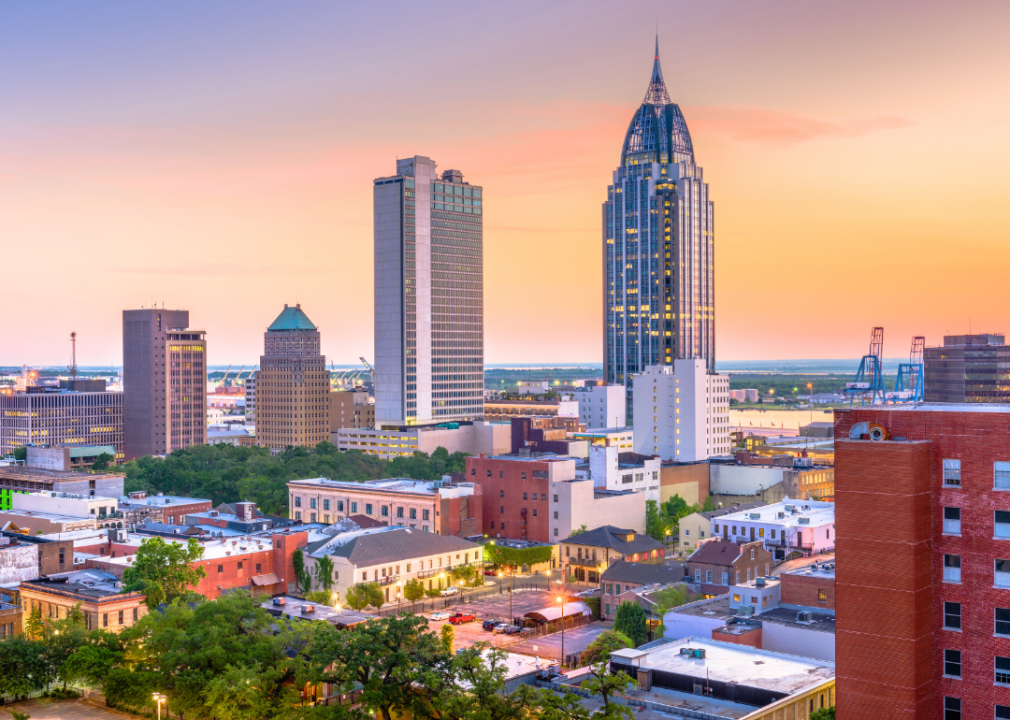
Canva
Alabama
Monetary incentives:
– Grants for public and other light-duty EV chargers

Canva
Alaska
No notable efforts listed.

Canva
Arizona
Privileges, protections, and exemptions:
– Alternative fuel vehicles, including EVs, can park in designated carpool spots
– Exempts alternative fuel vehicles from HOV lane occupancy restrictions
– Only EVs may park in EV charging spaces
– Exempts alternative fuel vehicles from emissions inspections

Canva
Arkansas
Monetary incentives:
– Grants to install EV charging stations
– Grants to replace buses with electric and other alternative fuel buses
– Grants to repower or replace medium-duty trucks, heavy-duty trucks, and buses with alternative fuel technologies, including EVs

Canva
California
Government goals, policies, and requirements:
– By 2030, aims to have 5 million zero-emission vehicles on the road
– By 2025, aims to have 200 hydrogen fueling stations and 250,000 EV chargers
– By 2035, all sales of new light-duty passenger vehicles must be zero-emission vehicles
– By 2045, all sales of new medium- and heavy-duty vehicles must be zero-emission vehicles
– By 2035, airport shuttle fleets must adopt 100% zero-emission vehicles
– Starting in 2035, school districts may only purchase or lease zero-emission buses
– By 2040, public transit agencies must adopt 100% zero-emission bus fleets
– Nearly all privately owned heavy-duty diesel vehicles must be retrofitted or replaced to meet updated emissions standards
– Requires transportation network companies to predominantly use zero-emission vehicles and to develop emission reduction plans
– Requires new construction to equip parking spaces with prewiring for EV charging stations, including residential, commercial, and public buildings
– Requires cities and counties to create expedited and streamlined permitting processes for EV charging stations
Monetary incentives:
– Grants to purchase or lease new and preowned EVs, plug-in hybrids, and fuel cell EVs (for income-qualifying residents)
– Grants and vouchers to purchase zero-emission buses
– Grants to replace heavy-duty vehicles with lower-emission alternatives
– Grants to install fueling infrastructure for medium- and heavy-duty zero-emission vehicles
– Grants to install EV chargers (businesses, nonprofits, local governments, and tribal governments)
– Vouchers to purchase electric, hybrid, or natural gas trucks and buses
– Vouchers for larger transit projects in low-income, disadvantaged communities, and tribal areas
– Rebates to replace batteries, fuel cells, or other related vehicle components in eligible used zero- and near-zero-emission vehicles
– Financial incentives to develop and deploy alternative and renewable fuels and advanced transportation technologies
– Locally administered grants and rebates for EV purchases, EV charging stations, and other projects (available in Bay Area, Antelope Valley, El Dorado County, South Coast, and San Joaquin Valley)
– Sales and use tax exclusion for manufacturers of advanced transportation products, components, or systems that reduce pollution and energy use, through 2025
– Property owner loan program for energy improvements, including EV charging stations
Privileges, protections, and exemptions:
– Exempts natural gas, hydrogen, electric, and plug-in hybrid electric vehicles from HOV lane occupancy restrictions, through specified dates
– Only actively charging EVs may park or stop in EV charging spaces
– Renters at residential and commercial properties and residents at multifamily properties must be allowed to install EV charging stations in their designated parking spaces
External collaborations:
– Multi-State Zero-Emission Vehicle Task Force
Other:
– Provides funding and guidance for property owners to develop their own EV charging station incentive programs

Canva
Colorado
Government goals, policies, and requirements:
– By 2050, electrify all light-duty vehicles and transition all medium- and heavy-duty vehicles be zero-emission, with incremental goals in the meantime
– By 2032, will mandate that 82% of new passenger vehicles sold in Colorado be zero-emission
– Beginning in 2027, will require manufacturers to sell zero-emission trucks as an increasing share of their annual sales
Monetary incentives:
– Tax credit for owners of EVs and hydrogen fuel cell EVs
– Grants to establish EV charging plazas and stations
– Grants for fleets to buy new alternative fuel vehicles, convert existing fleet vehicles, and install EV charging infrastructure
– Grants to replace diesel vehicles and equipment with all-electric or hybrid-electric equivalents, including things like tractors and construction equipment
– Grants for projects that reduce emissions from industrial and manufacturing operations, including transportation electrification
– Grants for electric school buses and charging infrastructure
– Grants for advanced industry companies, including those working on vehicle and component manufacturing and biofuels
Privileges, protections, and exemptions:
– Multifamily housing occupants must be allowed to install EV chargers in their parking spaces
– Exempts EVs from state emissions inspections
– Until 2030, exempts owners of EV charging stations from paying property tax on them
– Only actively charging EVs may park in EV charging spaces
External collaborations:
– Multi-State Zero-Emission Vehicle Task Force
Other:
– Provides coaching services to residents, local governments, workplaces, and multifamily housing developments to help them identify EV benefits, including monetary savings and grant opportunities
– Created a career program to provide education and training for high-paying jobs that support clean transportation, including manufacturing and maintenance of zero-emission vehicles and developing alternative clean fuels

Canva
Connecticut
Government goals, policies, and requirements:
– New public, commercial, and multiunit buildings of certain sizes must install or have wiring to support EV chargers
– By 2030, requires at least 30% of new transit buses to be zero-emission and bans the purchase of diesel transit buses
Monetary incentives:
– Grants to install public EV charging stations
– Matching funds for the purchase or lease of zero-emission school buses and chargers
– Rebates for residents to purchase or lease EVs, fuel cell EVs, or plug-in hybrids
– Low-interest loans for EV drivers to install home EV chargers
Privileges, protections, and exemptions:
– Multifamily housing occupants and rental tenants must be allowed to install EV chargers in their parking spaces
– Exempts EVs from state emissions inspections
– Only EVs may park in EV charging spaces
External collaborations:
– Multi-State Zero-Emission Vehicle Task Force
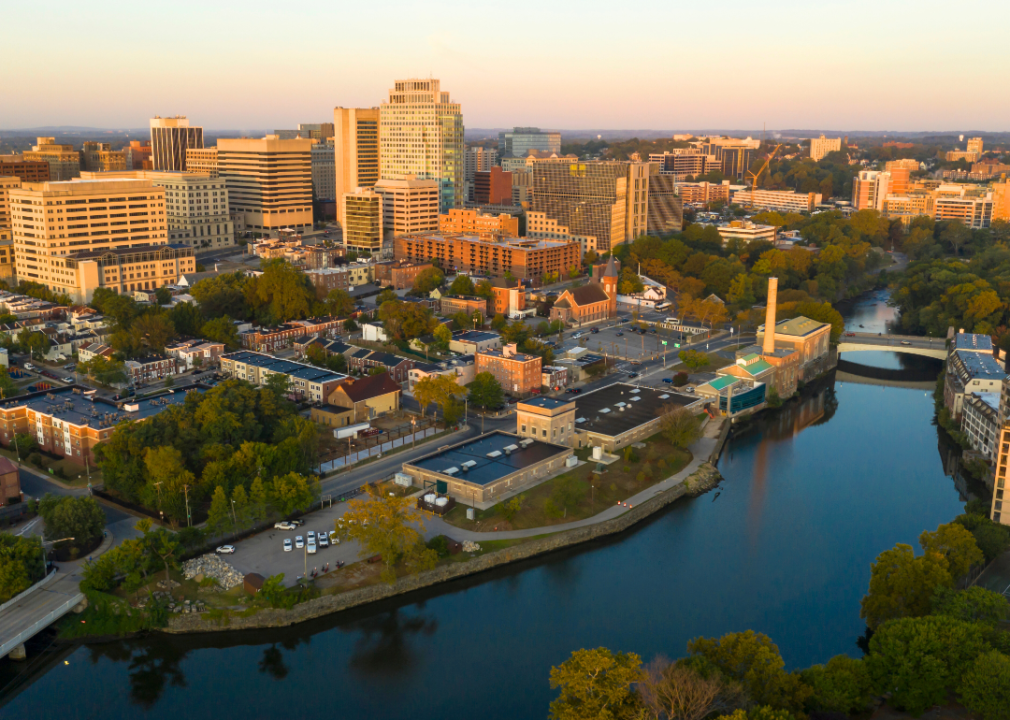
Canva
Delaware
Government goals, policies, and requirements:
– Requires new single-family homes to be built with at least one EV-capable parking spot
– Requires new multifamily housing developments to be built with some EV charging stations installed and prewiring for more
– Requires a growing share of school bus purchases to be electric
Monetary incentives:
– Rebates to purchase or lease new EVs or plug-in hybrids for residents, businesses, organizations, and government entities
– Rebates to install public, fleet, or workplace EV charging ports
– Rebates to install EV charging ports at new and existing multifamily housing sites
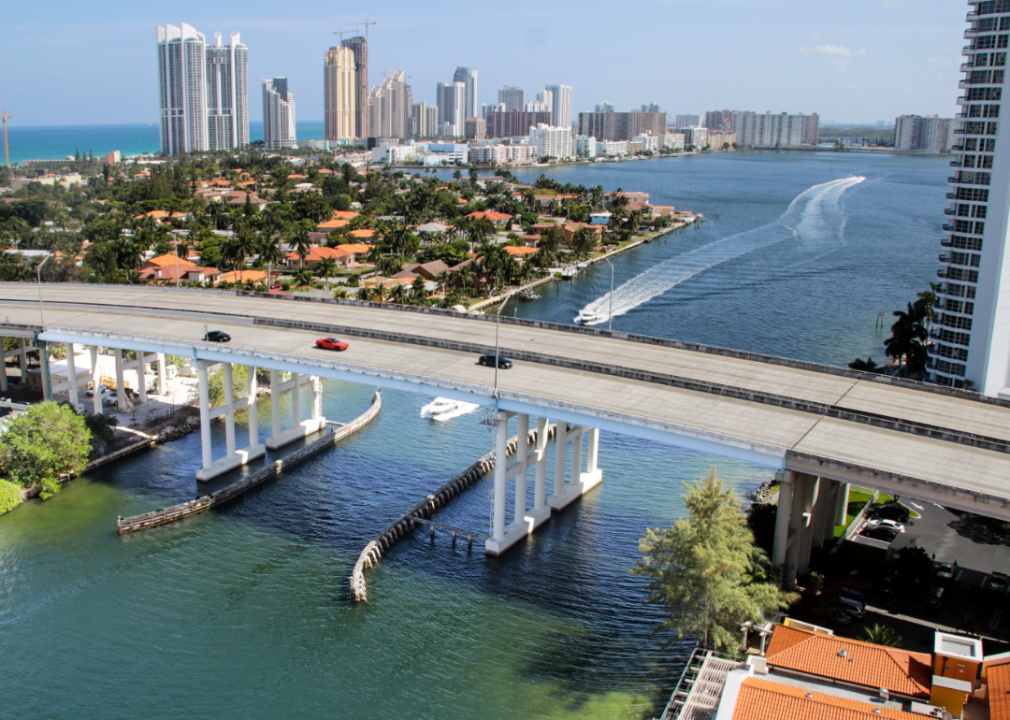
Canva
Florida
Monetary incentives:
– Local governments may offer funding or other financing to property owners for EV charger installations, but the state itself does not have an established program
Privileges, protections, and exemptions:
– Exempts low-emission and hybrid electric vehicles from HOV lane occupancy restrictions
– Condominium occupants must be allowed to install EV chargers in their parking spaces
– Only EVs may park in EV charging spaces
– Bans insurance companies from imposing surcharges on EVs based on factors such as new technology, passenger payload, weight-to-horsepower ratio, and manufacturing materials
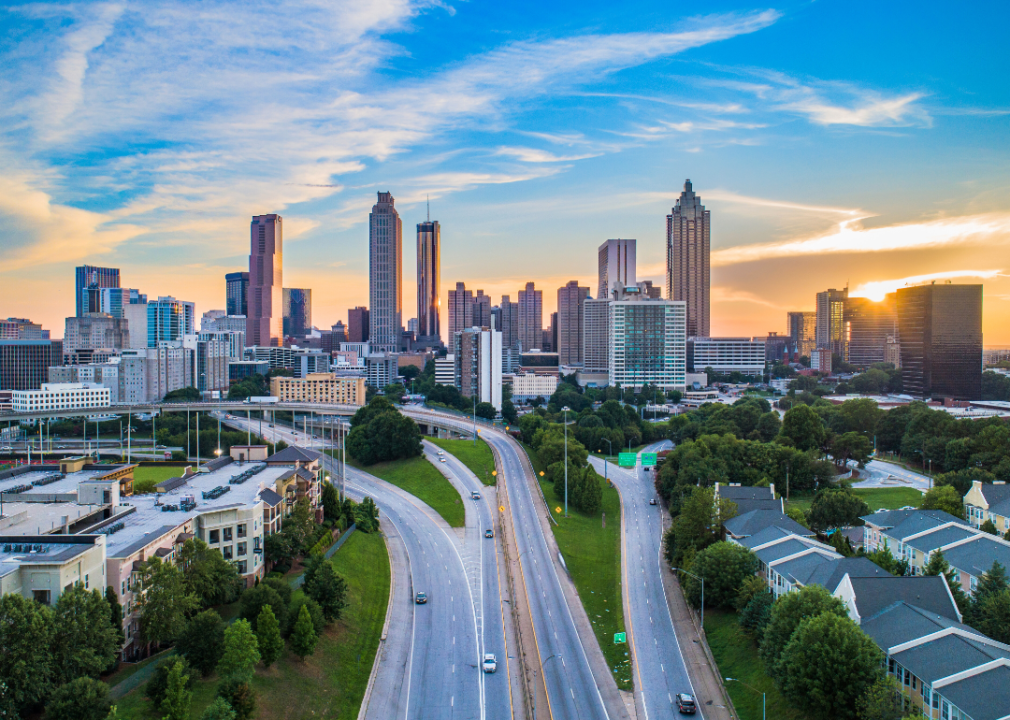
Canva
Georgia
Monetary incentives:
– Grants to replace diesel school buses with alternative fuel or zero-emission buses
– Five-year tax credit for businesses that manufacture alternative energy products for use in batteries, biofuel, and EVs
– Income tax credit for businesses that install EV chargers
– Income tax credit for those who convert a vehicle to natural gas, electricity, propane, or hydrogen
Privileges, protections, and exemptions:
– Exempts alternative fuel vehicles from HOV lane occupancy restrictions and tolls
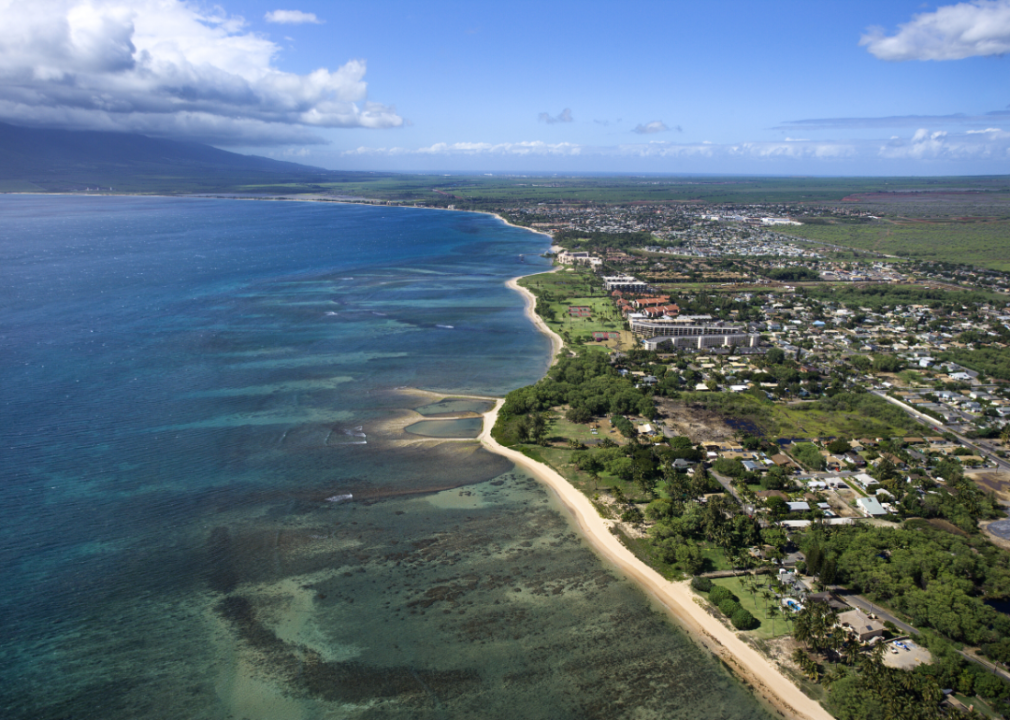
Canva
Hawaii
Government goals, policies, and requirements:
– By 2030, reduce greenhouse gas emissions by 50% from 2005 levels
– By 2045, achieve zero emissions across all transportation sectors
– By 2035, state agencies must transition all of their light-duty fleets to zero-emission vehicles
– Requires all public parking facilities with at least 100 parking spaces to install at least one EV charging spot
Monetary incentives:
– Rebates to replace medium- and heavy-duty diesel vehicles with zero-emission vehicles, including charging infrastructure
– Provides state government entities a revolving credit line to purchase or lease EVs and install EV chargers
External collaborations:
– Multi-State Zero-Emission Vehicle Task Force

Canva
Idaho
Monetary incentives:
– Rebates to replace medium- and heavy-duty diesel vehicles with new diesel or alternative fuel vehicles, including trucks, buses, and cargo handling equipment
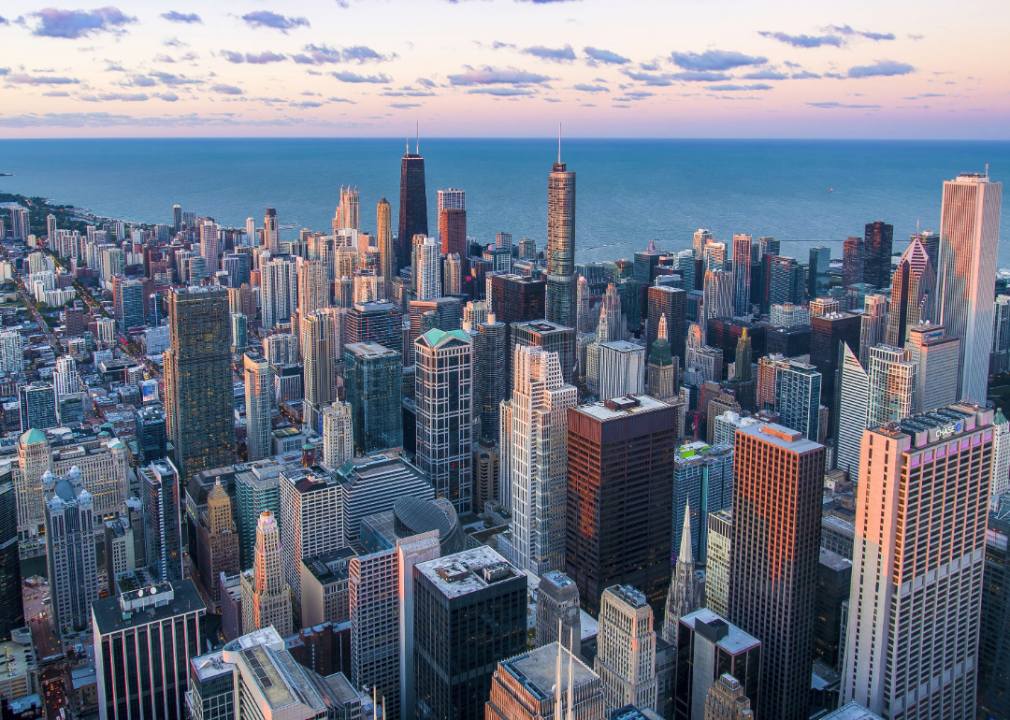
Canva
Illinois
Government goals, policies, and requirements:
– Anywhere the state’s toll highway authority has partnered with motor fuel service stations and facilities, garages, stores, or restaurants, it must also construct and maintain at least one EV charging station
– Any gasoline-powered vehicles purchased with state funds must be flex fuel vehicles or hybrid EVs
– All new or renovated residential developments must include a certain number of EV-capable parking spaces, depending on their size
Monetary incentives:
– Rebates for residents to purchase new or preowned EVs
– Grants to install and maintain public EV charging stations
– Tax credits for manufacturers of EVs, component parts, and charging stations
– Grants for projects that reduce diesel emissions
– Reimbursements for school districts to convert buses to alternative fuel engines
Privileges, protections, and exemptions:
– Exempts battery EVs from state emissions inspections
– Exempts EVs from user fee on fleets with 10 or more vehicles
– Only EVs may park or stop in EV charging spaces
– Condominium occupants and rental property tenants must be allowed to install EV chargers in their parking spaces
External collaborations:
– The Lake Michigan EV Circuit Tour memorandum of understanding, which aims to create an EV charging corridor along the Lake Michigan coastline
– REV Midwest memorandum of understanding, which aims to accelerate vehicle electrification in the Midwest

Canva
Indiana
Government goals, policies, and requirements:
– State entities must purchase or lease clean energy vehicles
Monetary incentives:
– Grants to replace or convert medium- and heavy-duty diesel vehicles, including trucks, buses, and cargo-handling equipment
– Grants for projects that reduce diesel emissions, including alternative fuel conversions
– Grants and loans to support economic development in high-technology industries, including alternative fuel technologies and fuel-efficient vehicle production
External collaborations:
– The Lake Michigan EV Circuit Tour memorandum of understanding, which aims to create an EV charging corridor along the Lake Michigan coastline
– REV Midwest memorandum of understanding, which aims to accelerate vehicle electrification in the Midwest

Canva
Iowa
Government goals, policies, and requirements:
– At least 10% of new state vehicle purchases must be alternative fuel vehicles
Monetary incentives:
– Grants to install public EV charging stations
– Grants to replace, retrofit, or convert medium- and heavy-duty diesel vehicles to alternative fuels
– Grants for projects that support the implementation of the Iowa Energy Plan, including the purchase of EVs and other alternative fuel vehicles
– Loans for energy infrastructure projects that facilitate electricity, biofuel, and renewable natural gas transmission, storage, or distribution
– Demonstration grants for individuals who purchase alternative fuel vehicles in order to conduct research connected with the fuel or vehicle. In these cases, the Department of Natural Resources retains the title of the research vehicle.

Canva
Kansas
Other:
– Conducted a study including EV topics, such as charger rate design, charger service deregulation, and the benefits of improving access to EVs and public charging stations.

Canva
Kentucky
Government goals, policies, and requirements:
– By 2026, the state must replace at least 50% of light-duty fleet vehicles with alternative fuel or other low-emission vehicles
Monetary incentives:
– Grants to replace school buses with newer diesel or alternative fuel buses
– Offers government agencies a 50% cost match for EV chargers

Canva
Louisiana
Other:
– Has a statute stating it must support the development of a statewide EV charging network by improving EV charging station infrastructure, improving consumer experiences, encouraging a cost structure for public charging stations, and encouraging the deregulation of EV charging stations

Canva
Maine
Government goals, policies, and requirements:
– By 2025, 50% of state light-duty fleet acquisitions must be zero-emission vehicles and plug-in hybrids. This increases to 100% by 2030. The state encourages municipalities to do the same by 2035.
– Starting in 2035, 75% of school bus acquisitions must be zero-emission vehicles
Monetary incentives:
– Rebates to purchase or lease new EVs or plug-in hybrids
– Provides zero- and low-interest loans for alternative fuel vehicle projects, including purchases of EVs, fuel cell EVs, zero-emission vehicles, and associated charging and fueling infrastructure
External collaborations:
– Multi-State Zero-Emission Vehicle Task Force
Other:
– Developing a pilot program to provide incentives for commercial entities to purchase or lease medium- and heavy-duty EVs
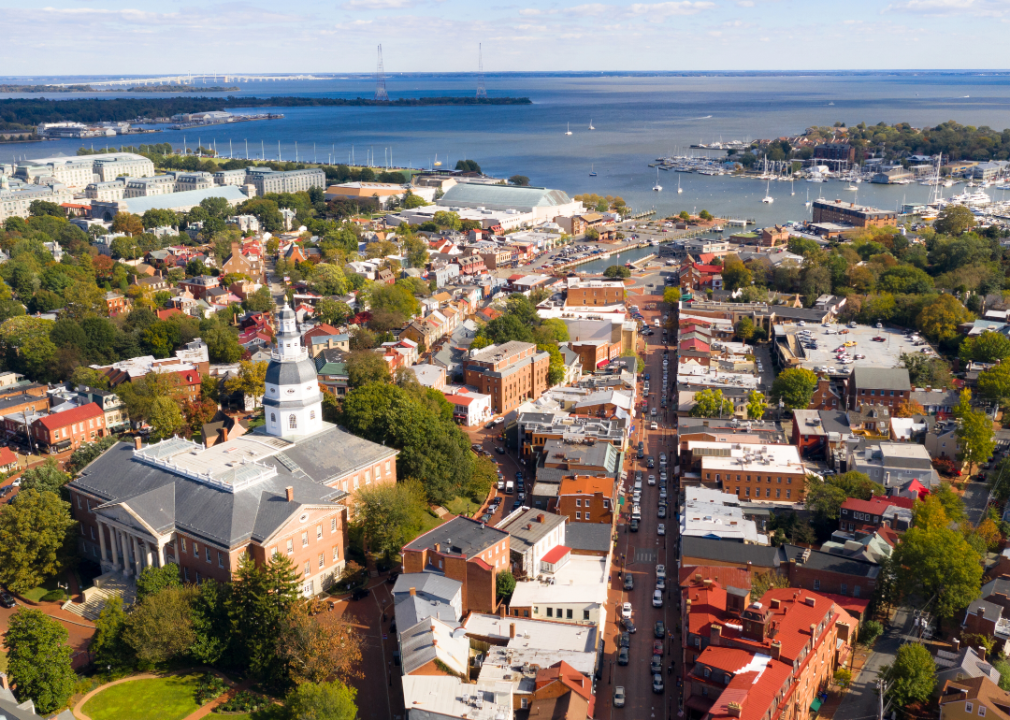
Canva
Maryland
Government goals, policies, and requirements:
– Beginning with model year 2027, will require manufacturers to sell zero-emission trucks as an increasing percentage of their annual sales in Maryland.
– By 2031, will adopt 100% zero-emission passenger vehicles in the state fleet. Will do the same for all other light-duty vehicles by 2036.
– The Maryland Transit Administration may only purchase zero-emission buses for state transit
– Beginning in 2025, county boards of education may only purchase zero-emission school buses
– New construction of homes with a garage, carport, or driveway must include an EV charger or prewiring to support one
Monetary incentives:
– Grants to local governments for transportation projects, including EV purchases and charger installations
– Rebates to install EV chargers (available to individuals, businesses, multifamily housing, and state or local government entities)
– Excise tax credit to those purchasing EVs and fuel cell EVs
– Grants to install solar arrays on existing public facilities and infrastructure, including solar canopies that support EV chargers
– Grants to purchase zero-emission school buses and install charging infrastructure
– Grants to purchase new zero-emission medium- and heavy-duty vehicles
Privileges, protections, and exemptions:
– Exempts alternative fuel vehicles from emissions inspections
– Multifamily housing occupants must be allowed to install EV chargers in their parking spaces
– Only actively charging EVs may park in EV charging spaces
– Exempts low-emission and hybrid EVs from HOV lane occupancy restrictions
External collaborations:
– Multi-State Zero-Emission Vehicle Task Force
– The Mid-Atlantic Electrification Partnership, which supports the deployment of EVs and EV chargers throughout the region
Other:
– Administering a pilot program to deploy electric school buses

Canva
Massachusetts
Government goals, policies, and requirements:
– Set infrastructure requirements to gradually increase zero-emission vehicles in state fleets, mandate new vehicle acquisitions be zero-emission, and add hundreds of EV charging stations to state properties
– Requires state vehicle purchases to be hybrid electric or alternative fuels to the maximum extent feasible
– By late 2030, will require new bus purchases by the Massachusetts Bay Transportation Authority to be zero-emission vehicles
– By late 2040, will require all MBTA buses to be zero-emission
– Beginning with model year 2025, will require manufacturers to sell zero-emission trucks as an increasing percentage of their annual sales in Massachusetts
– Requires any new commercial construction with over 15 parking spots to include at least one that is prewired for EV charging
– Requires transportation network companies to reduce emissions and adopt EVs
Monetary incentives:
– Rebates to purchase or lease new zero-emission vehicles, all-electric and hydrogen fuel cell electric trucks, buses, vans, pickups, and other light-duty vehicles (for residents, nonprofits, and businesses)
– Rebates to purchase or lease preowned zero-emission vehicles (for low-income residents)
– Provides some residents with free or discounted EV chargers
– Grants for projects that reduce diesel emissions in Massachusetts, including alternative fuel engine conversions, exhaust retrofits, and new vehicle purchases
– Grants to install EV charging stations at workplaces, educational campuses, multifamily housing developments, and other public access areas
– Grants to purchase or lease qualified EVs and zero-emission motorcycles (for local governments, public universities and colleges, and state agencies)
Privileges, protections, and exemptions:
– Exempts EVs from state emissions inspections
External collaborations:
– Multi-State Zero-Emission Vehicle Task Force
Other:
– When forging new and renewed transportation department contracts, will require fuel providers on the Massachusetts Turnpike to offer alternative fuels
– Developed a website to provide the public with information on EVs

Canva
Michigan
Government goals, policies, and requirements:
– By 2023, will require 100% of light-duty vehicles in the state fleet to be zero-emission
– By 2040, will require 100% of medium- and heavy-duty vehicles in the state fleet to be zero-emission
Monetary incentives:
– Grants to install EV charging stations (for public or private organizations)
– Grants to replace medium- and heavy-duty diesel vehicles and equipment with hybrid, alternative fuel, and zero-emission vehicles
– Grants for mobility and electrification companies to deploy their technology in Michigan, including EVs and charging stations
– Property tax exemptions for industrial properties used for high-technology activities, including those related to EVs, hybrid EVs, or alternative fuel vehicles and their components
Privileges, protections, and exemptions:
– Exempts alternative fuel vehicles from state emissions inspections
External collaborations:
– The Lake Michigan EV Circuit Tour memorandum of understanding, which aims to create an EV charging corridor along the Lake Michigan coastline
– REV Midwest memorandum of understanding, which aims to accelerate vehicle electrification in the Midwest

Canva
Minnesota
Government goals, policies, and requirements:
– Adopted California motor vehicle emissions standards and compliance requirements specified in Title 13 of the California Code of Regulations
Monetary incentives:
– Rebates to purchase or lease new or preowned EVs or plug-in hybrids (for residents)
– Toll lane credits for EV drivers
– Grants to purchase new electric school buses or to convert existing school buses to electricity, plus matching funds for federal grants toward the same purpose
– Grants to replace off-road diesel equipment, such as trailer refrigeration units and terminal tractors
External collaborations:
– REV Midwest memorandum of understanding, which aims to accelerate vehicle electrification in the Midwest

Canva
Mississippi
Other:
– The state treasury is required to create a fund to provide grants or loans to EV battery manufacturing and assembly projects

Canva
Missouri
Government goals, policies, and requirements:
– Requires state agency fleets of 15 or more vehicles to ensure that at least 50% of new vehicle purchases can operate on alternative fuels
Privileges, protections, and exemptions:
– Exempts alternative fuel passenger vehicles, buses, and commercial vehicles from the state motor fuel tax
– Exempts alternative fuel vehicles from state emissions inspections

Canva
Montana
Monetary incentives:
– Grants to replace medium- and heavy-duty diesel buses and airport ground support vehicles with all-electric and alternative fuel vehicles

Canva
Nebraska
Monetary incentives:
– Low-cost loans for alternative fuel projects, such as replacing conventional vehicles with alternative fuel vehicles

Canva
Nevada
Government goals, policies, and requirements:
– Adopted the California motor vehicle emissions and compliance requirements specified in Title 13 of the California Code of Regulations
– Requires state agencies to transition light-duty vehicle fleets to zero-emission vehicles by 2040, and to do the same with medium- and heavy-duty vehicles by 2050
Monetary incentives:
– Grants to replace or convert medium- and heavy-duty diesel vehicles
– Grants for clean energy projects, including programs, technologies, products, or services that support alternative fuel vehicles and related infrastructure
Privileges, protections, and exemptions:
– Exempts alternative fuel and hybrid electric vehicles from state emissions inspections
– Only actively charging EVs may park in EV charging spaces
External collaborations:
– Multi-State Zero-Emission Vehicle Task Force

Canva
New Hampshire
Government goals, policies, and requirements:
– When purchasing fleet vehicles, state agencies must pursue EV opportunities and install EV charging stations
Monetary incentives:
– Grants to reduce diesel emissions by converting engines to alternative fuels, retrofitting exhaust controls, or purchasing new alternative fuel vehicles
Privileges, protections, and exemptions:
– Only EVs may park in EV charging spaces

Canva
New Jersey
Government goals, policies, and requirements:
– By 2040, aims for 85% of all new light-duty vehicles sold in the state to be EVs, with incremental goals in the meantime to add millions of registered light-duty EVs in the state; shift all light-duty state fleets to EVs; add thousands of EV charging stations; increase EV charging infrastructure at multifamily residential properties and overnight lodging; and increase the share of zero-emission transit buses
– Beginning with model year 2025, will require manufacturers to sell zero-emission trucks as an increasing percentage of their annual sales in New Jersey
– Mandates single-family property developers to offer to install an EV charging station for prospective owners
– Requires new multifamily housing and commercial developments with designated parking to prewire some spots for EV charging
Monetary incentives:
– Rebates to purchase or lease EVs (for residents, local and state governments)
– Grants to install EV charging stations at multifamily housing developments, tourism sites, landmarks, workplaces, government agency buildings, and nonprofits
– Grants to replace diesel medium- and heavy-duty vehicles and buses with all-electric vehicles, including charging infrastructure
– Grants to increase electric mobility solutions for residents in underserved areas, including car-share, ride-share, and ride-hailing services
– Sales and use tax exemption for zero-emission vehicles that were sold or leased before Oct. 1, 2024
– Toll discounts for EVs during off-peak hours on the New Jersey Turnpike and Garden State Parkway
Privileges, protections, and exemptions:
– Exempts plug-in electric vehicles from HOV lane occupancy restrictions
– Condominium occupants must be allowed to install EV chargers in their parking spaces
External collaborations:
– Multi-State Zero-Emission Vehicle Task Force
Other:
– To pilot a voucher program to cover up to 100% of costs on zero-emission medium- and heavy-duty vehicles for commercial, industrial, or institutional organizations
– Will implement an Electric School Bus program to research the viability of electric school buses, which will include providing grants to districts to purchase electric school buses and charging infrastructure

Canva
New Mexico
Government goals, policies, and requirements:
– State agencies must purchase EVs, plug-in hybrid EVs, or fuel cell EVs when acquiring new vehicles, when available. All state fleet vehicles must be these types by 2035.
– Beginning with model year 2027, manufacturers will be required to sell zero-emission trucks as an increasing percentage of their annual sales
– Beginning with model year 2026, manufacturers must meet the California-defined greenhouse gas emissions standard and the zero-emission vehicle production and sales requirements. These regulations apply to new passenger cars, light-duty trucks, and SUVs.
– At least 75% of light-duty vehicles purchased by the state government and educational institutions must be hybrid EVs, bi-fuel, or alternative fuel vehicles
Monetary incentives:
– Grants to replace heavy-duty diesel vehicles with EVs or convert existing vehicles
– Tax credit to residential and commercial properties to install prewiring for EV chargers
– Tax credit to manufacturers of alternative energy products, including hydrogen and fuel cell vehicle systems, EVs, and hybrids
– State excise tax exemption for alternative fuels distributed by or used for government or tribal purposes

Canva
New York
Government goals, policies, and requirements:
– By 2035, all sales or leases of new light-duty passenger vehicles must be zero-emission vehicles
– By 2035, all sales of new off-road vehicles and equipment must be zero-emission vehicles
– By 2045, all sales or leases of new medium- and heavy-duty vehicles must be zero-emission vehicles
– Allocated up to $250 million to support EVs and address charging infrastructure gaps throughout the state, including interstate EV charging, airport charging hubs, and EV model communities
– Beginning with model year 2025, manufacturers will be required to sell zero-emission trucks as an increasing percentage of their annual sales
– Beginning in July 2027, school districts may only acquire zero-emission school buses
– By the end of 2035, all state agency light-duty fleet vehicles must be zero-emission, with medium- and heavy-duty vehicles following suit by 2040
– New construction of non-residential and publicly funded parking facilities with 50-200 spaces must prewire 20% for EV charging
Monetary incentives:
– Rebates to purchase or lease new EVs
– Rebates to install EV charging stations at public parking facilities, workplaces, and multiunit dwellings
– Vouchers for all-electric and hydrogen fuel cell electric heavy-duty trucks and buses
– Vouchers for zero-emission school buses
– Funds to replace or convert diesel medium- and heavy-duty vehicles
– Rebates to purchase or lease zero-emission vehicles and grants to install related fueling infrastructure (for cities, towns, villages, counties, and New York City boroughs)
– Funding for projects that research or develop advanced technologies to enhance mobility, improve efficiency, reduce congestion, and diversify transportation methods and fuels
Privileges, protections, and exemptions:
– Exempts EVs from state emissions inspections
– Multifamily housing occupants and owners within homeowners associations must be allowed to install EV chargers in their parking spaces
– Only actively charging EVs may park in EV charging spaces
– Exempts EVs from HOV lane occupancy restrictions
External collaborations:
– Multi-State Zero-Emission Vehicle Task Force

Canva
North Carolina
Government goals, policies, and requirements:
– Developed a plan to increase the number of zero-emission vehicles in the state to 80,000 by 2025; and to register 1.25 million zero-emission vehicles and increase their share of new passenger vehicle sales to 50% by 2030
– Requires state fleets to prioritize zero-emission vehicles in new purchases and to use these vehicles for agency travel when possible. Established a goal that 75% of new or replacement state government light-duty cars and trucks be alternative fuel or low-emission vehicles. Also requires state-owned fleets to increase the use of alternative fuels and fuel-efficient vehicles.
Monetary incentives:
– Funding to replace or convert heavy-duty diesel fleet vehicles to alternative fuels
– Grants to install public and private EV charging stations
– Grants for projects that will reduce transportation-related emissions in certain areas
– Retail sales and use tax exemption for retail sale, use, storage, and consumption of alternative fuels
Privileges, protections, and exemptions:
– Exempts EVs, dedicated natural gas vehicles, and fuel cell EVs from HOV lane occupancy restrictions
– Exempts EVs and fuel cell EVs from state emissions inspections
External collaborations:
– Multi-State Zero-Emission Vehicle Task Force
Other:
– Established a fund for state agencies to offset the cost of purchasing alternative fuels, vehicles, and related infrastructure

Canva
North Dakota
Monetary incentives:
– Grants to replace or convert medium- and heavy-duty diesel vehicles with new diesel or alternative fuel vehicles
– Authorized to provide EV charging station grants

Canva
Ohio
Government goals, policies, and requirements:
– Requires all newly acquired state agency vehicles to be capable of using an alternative fuel and to use that alternative fuel if it is available and reasonably priced
Monetary incentives:
– Grants to replace or convert medium- and heavy-duty diesel vehicles with alternative fuel vehicles, including supporting infrastructure
– Grants for projects that retire and replace diesel public transit buses
Privileges, protections, and exemptions:
– Exempts alternative fuel vehicles from state emissions inspections after a one-time verification

Canva
Oklahoma
Monetary incentives:
– Grants for public EV charging stations
– Rebates to replace or convert diesel school buses to alternative fuel
– Tax credit to install commercial alternative fueling infrastructure
Other:
– Signed a memorandum of understanding to support advanced mobility solutions, including EVs, AVs, and battery manufacturing

Canva
Oregon
Government goals, policies, and requirements:
– Beginning with model year 2025, manufacturers will be required to sell zero-emission trucks as an increasing percentage of their annual sales
– Beginning in 2025, require all new light-duty state agency vehicle acquisitions to be electric, plug-in hybrid electric, or hydrogen fuel cell vehicles to the maximum extent possible. When not possible, the vehicles must be of other alternative fuel or low-emission.
– Requires 20% of parking spaces at new commercial, mixed-use, and certain multifamily developments to include prewiring to support EV chargers
– Requires new residential construction to be able to support EV chargers
Monetary incentives:
– Grants to develop community renewable energy projects, including public EV chargers (for tribal entities, local governments, port and irrigation districts, and consumer-owned utilities)
– Grants to replace or convert school buses to reduce diesel emissions
– Rebates to install EV chargers (for businesses, multifamily housing developments, and state, local, and tribal governments)
– Rebate to purchase new or preowned EVs and public hybrids between April 3 and June 4, 2024 (for residents)
– Low-interest loans for projects that develop alternative fueling infrastructure, production facilities, and fleets
Privileges, protections, and exemptions:
– Multifamily housing occupants must be allowed to install EV chargers in their parking spaces
– Only actively fueling alternative fuel vehicles may park in designated fueling spaces
– Exempts natural gas and all-electric vehicles from equipping with certified pollution control systems
External collaborations:
– Multi-State Zero-Emission Vehicle Task Force
Other:
– Plans to use up to 15% of VW Environmental Mitigation Trust funds to support vehicle electrification, including development and maintenance of EV chargers
– Has a Parks and Recreation Transportation Electrification Fund to install public EV chargers at state parks
– Provides Governor’s Awards to dealerships to encourage EV sales

Canva
Pennsylvania
Government goals, policies, and requirements:
– By 2025, state agencies required to replace 25% of passenger car fleets with EVs
Monetary incentives:
– Rebates to purchase new or preowned alternative fuel vehicles
– Grants for diesel emission reduction projects
– Grants to convert or replace ferries, tugboats, and freight switcher locomotives with new diesel, alternative fuel, or all-electric equivalents
– Grants to replace medium- and heavy-duty trucks with zero-emission electric or hydrogen fuel cell electric trucks
– Grants to replace equipment with all-electric substitutes, including airport ground support, forklifts, and port cargo handling equipment
– Grants for advanced fuel and technology projects to convert vehicles for alternative fuels, purchase new alternative fuel vehicles and necessary infrastructure, or conduct research, training, development, and demonstrations of new alternative fuel vehicle technologies (for school districts, municipal authorities, political subdivisions, nonprofits, and private entities)
External collaborations:
– Multi-State Zero-Emission Vehicle Task Force

Canva
Rhode Island
Government goals, policies, and requirements:
– By 2025, requires 25% of state vehicle acquisitions to be zero-emission by 2025. Requires 75% of acquisitions to be alternative fuel vehicles and 25% to be hybrid electric.
– Beginning with model year 2027, manufacturers will be required to sell zero-emission trucks as an increasing percentage of their annual sales
– Adopted an EV charging station plan for state infrastructure needs
Monetary incentives:
– Grants to replace medium- and heavy-duty diesel vehicles with new diesel, alternative fuel, and zero-emission vehicles (for fleet operators, businesses, local and state government entities, schools districts, and other qualifying entities)
– Rebates to purchase or lease zero-emission and plug-in hybrid vehicles (for residents)
– Rebates to purchase or lease new and preowned zero-emission vehicles (for small businesses, nonprofits, state and local government agencies, school districts, and public libraries)
Privileges, protections, and exemptions:
– Exempts alternative fuel vehicles from state emissions inspections
– Only actively charging EVs may park in EV charging spaces
External collaborations:
– Multi-State Zero-Emission Vehicle Task Force
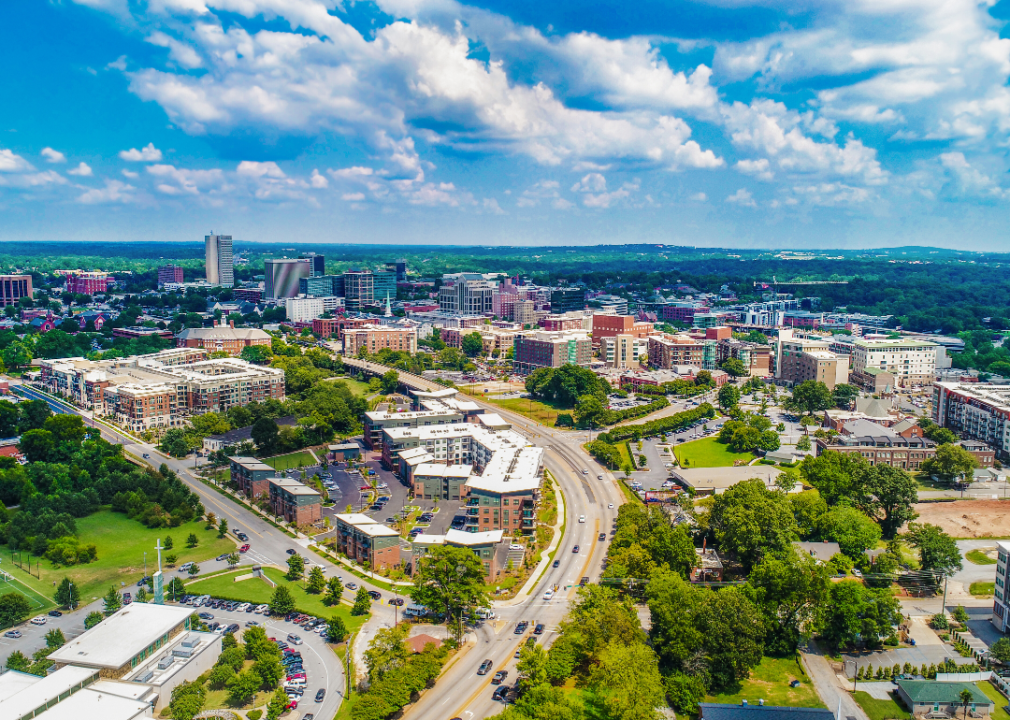
Canva
South Carolina
Government goals, policies, and requirements:
– Requires state agencies to give preference to hybrid, plug-in hybrid electric, biodiesel, hydrogen, fuel cell, or flexible fuel vehicles when purchasing new vehicles
Monetary incentives:
– Grants for alternative fuel demonstration projects (for state agencies, local governments, public colleges and universities, K-12 public schools, and nonprofits)
– Grants for projects that reduce diesel emissions, including those that retrofit engines or replace vehicles and equipment (for universities, private organizations, businesses, and local government entities)
– Low-interest loans for energy efficiency improvements, including alternative fuel vehicle conversions and purchases

Canva
South Dakota
Monetary incentives:
– Grants for bus diesel emission reduction projects

Canva
Tennessee
Government goals, policies, and requirements:
– At least 25% of passenger motor vehicles that the state procures in designated areas must be alternative fuel or all-electric vehicles, if available
Monetary incentives:
– Grants to convert or replace buses and freight trucks with alternative fuel or all-electric models
– Grants to install EV charging stations (for private, public, and nonprofits)

Canva
Texas
Government goals, policies, and requirements:
– Requires state agency fleets to purchase vehicles that use alternative fuels. Within these fleets, half of vehicles must be able to run on alternative fuel and must use these fuels during at least 80% of driving time.
Monetary incentives:
– Grants to purchase or lease new light-duty alternative fuel vehicles
– Grants to replace fleet vehicles with alternative fuel vehicles or hybrid EVs
– Grants to build alternative fueling facilities for natural gas, hydrogen, biodiesel, propane, electricity, and methanol
– Grants to replace or convert drayage and cargo handling equipment with electric equipment and other low-emission alternatives
– Grants to replace heavy-duty, diesel-powered vehicles with newer vehicles powered by diesel, natural gas, propane, methanol, hydrogen, or electricity, or to convert existing vehicles
– Grants for clean air projects, including those that replace, retrofit, or convert heavy-duty vehicles, build and use alternative fuel infrastructure, and expand electrification infrastructure
– Grants to replace school buses or install emission-reducing equipment on existing buses
Privileges, protections, and exemptions:
– Exempts EVs from state emissions inspections

Canva
Utah
Monetary incentives:
– Tax credits to purchase heavy-duty alternative fuel vehicles
– Rebates to install EV charging stations (for businesses, nonprofits, and government entities)
– Grants to purchase alternative fuel vehicles or convert existing vehicles to run on these fuels (for businesses and government entities)
Privileges, protections, and exemptions:
– Exempts propane and electricity used to operate motor vehicles from state motor fuel taxes
– Exempts alternative fuel vehicles from HOV lane occupancy restrictions until September 2025
– Exempts electric vehicles from state emissions inspections
Other:
– Authorized to establish a large-scale EV charging station program of up to $50 million

Canva
Vermont
Government goals, policies, and requirements:
– Established goal to deploy one public EV charging port within a mile of all interstate and highway exits and within 25 miles of other chargers along state highways
– Beginning with model year 2026, manufacturers will be required to sell zero-emission trucks as an increasing percentage of their annual sales
– Requires at least 75% of state-purchased vehicles to be EVs or hybrids
Monetary incentives:
– Grants to purchase or lease new EVs (for low- and moderate-income residents, local and state governments, businesses, and nonprofits)
– Grants to replace personal vehicles with new or preowned all-electric or plug-in hybrid vehicles
– Grants for projects focused on reducing emissions from heavy-duty diesel engines and buses, including converting or replacing vehicles (for local, state, and regional agencies or departments, businesses, institutions, and nonprofits)
– Grants to install EV chargers (for workplaces, multifamily housing developments, and other public charging locations)
– Low-interest loans to finance public EV chargers and natural gas fueling stations (for municipalities, regional development corporations, political subdivisions, and private companies)
External collaborations:
– Multi-State Zero-Emission Vehicle Task Force
Other:
– The state transportation agency is required to administer a pilot program to install EV chargers at multifamily and affordable housing units

Canva
Virginia
Government goals, policies, and requirements:
– Adopted California motor vehicle emissions and compliance requirements specified in Title 13 of the California Code of Regulations, which apply to all passenger cars, light-duty trucks, and medium-duty vehicles
– Requires new executive branch agencies and institutions constructing buildings over 5,000 square feet or doing costly renovations to include EV charging infrastructure, unless in interstate system right-of-way. Requires localities constructing similarly-sized buildings to support projected EV charging demand over the first 10 years following its occupancy.
Monetary incentives:
– Grants to purchase alternative fuel vehicles or convert existing vehicles (for state agencies and local governments)
– Grants to install EV charging stations in rural or underserved communities (for businesses and public-private partnerships)
Privileges, protections, and exemptions:
– Exempts alternative fuel vehicles from state emissions inspections
– Condominium occupants and owners within homeowners associations must be allowed to install EV chargers in their parking spaces
– Only actively charging EVs may park in EV charging spaces
– Exempts alternative fuel vehicles from HOV lane occupancy restrictions in specified areas
External collaborations:
– Multi-State Zero-Emission Vehicle Task Force
– The Mid-Atlantic Electrification Partnership, which supports the deployment of EVs and EV chargers throughout the region

Canva
Washington
Government goals, policies, and requirements:
– By model year 2030, all new light-duty vehicles sold, purchased, or registered in Washington must be EVs
– Beginning with model year 2025, will require manufacturers to sell zero-emission trucks as an increasing percentage of their annual sales
– Requires state executive and small-cabinet agency fleets to acquire EVs at increasing rates, and will require all new fleet vehicles to be EVs by 2040
– Requires state agencies to use 100% biofuels or electricity to operate publicly owned vehicles, to the extent possible
– All new buildings must prewire at least one parking space, or 10% of all parking spaces, for EV chargers
– Requires regional transportation organizations in large-population areas to collaborate on efforts to promote EV use
– Requires jurisdictions to adopt regulations for permitting EV infrastructure and battery charger use in most areas
– State required to install EV chargers and fueling stations in certain areas
Monetary incentives:
– Grants to install EV chargers at public, workplace, tribal, and multifamily housing locations and along highway corridors
– Grants to replace or convert medium- and heavy-duty diesel vehicles to zero-emission vehicles, including refuse trucks, street sweepers, freight switcher locomotives, port cargo handling equipment, and forklifts
– Grants to design and create zero-emission vehicle car-share programs in underserved and low-to-moderate income communities (for nonprofits and local governments)
– Grants to replace diesel school buses with zero-emission school buses, including fueling infrastructure
– Grants for projects that reduce carbon intensity in state transportation, including fleet electrification, upgrades to electrical transmission and distribution systems, and construction of charging and fueling infrastructure (for transit authorities)
– Business tax credits to purchase new and used alternative-fuel medium- and heavy-duty vehicles, and to install related fueling infrastructure
– Sales and use tax exemption for new and used alternative fuel passenger vehicles and light-duty trucks
– Sales and use tax exemption for EV and fuel cell EV infrastructure and battery sales, labor, installation, and related property
– Leasehold excise tax exemption for public lands used to install, maintain, and operate EV chargers
Privileges, protections, and exemptions:
– Exempts alternative fuel vehicles from state emissions inspections
– Multifamily housing occupants must be allowed to install EV chargers in their parking spaces
Other:
– Plans to use 15% of VW Environmental Mitigation Trust funds to install, operate, and maintain zero-emission vehicle charging infrastructure
– Developing a zero-emission drayage truck demonstration project to guide the transition to zero-emission seaport cargo fleets

Canva
West Virginia
External collaborations:
– The Mid-Atlantic Electrification Partnership, which supports the deployment of EVs and EV chargers throughout the region

Canva
Wisconsin
Monetary incentives:
– Grants to replace public transit buses with new replacement diesel or alternative fuel buses
– Grants for projects that reduce diesel emissions, including new vehicle purchases or engine conversions for school and transit buses, nonroad engines, equipment, and other diesel vehicles (for businesses, nonprofits, and public entities)
– Grants to support renewable energy and energy storage technology development, including planning for fleets and EVs
– Refunds state fuel tax payments for taxis using alternative fuels
– Exempts alternative fuels from excise, license, privilege, or occupational taxes
– Tax credits for corporations conducting vehicle battery and engine research
External collaborations:
– Part of the REV Midwest memorandum of understanding to accelerate vehicle electrification in the Midwest
– Part of the Lake Michigan EV Circuit Tour memorandum of understanding to create an EV charging corridor along the Lake Michigan coastline

Canva
Wyoming
No notable efforts listed.
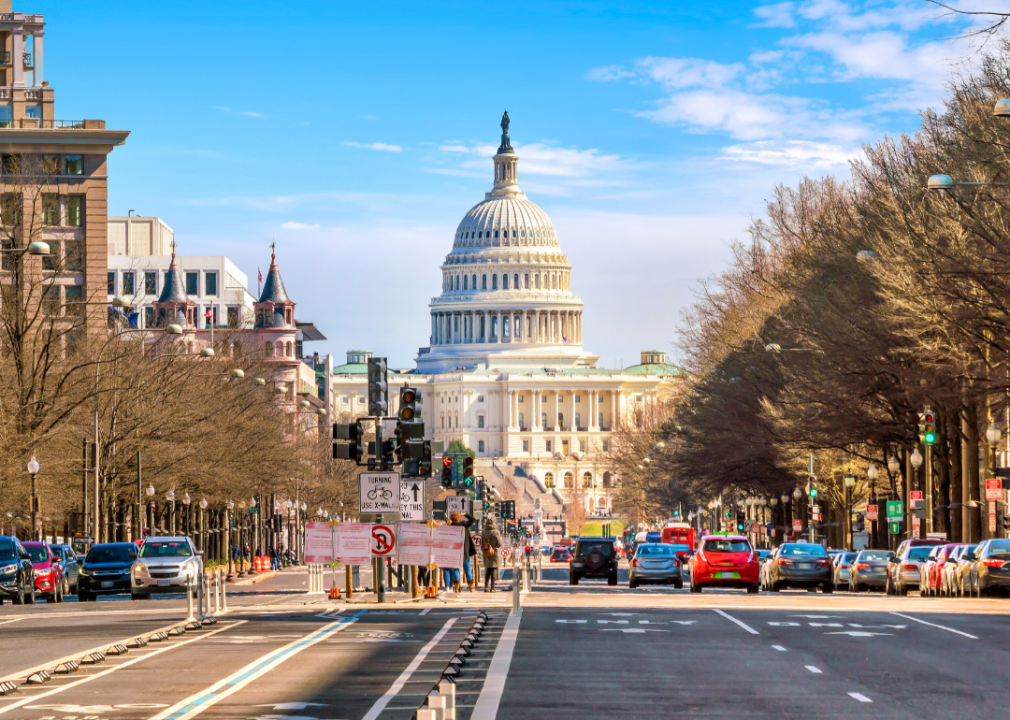
Canva
Washington D.C.
Government goals, policies, and requirements:
– Aims to achieve 25% zero-emission vehicle registrations by 2030
– Starting in 2026, requires government entities to only acquire zero-emission vehicles, unless there are no equivalent models available
– Requires 70% of certain new fleet purchases to be clean fuel vehicles
– Executive office of the mayor to establish a transportation electrification program, which will require all buses, large private fleets, commercial motor carriers, limo services, and taxis to be zero-emission vehicles by 2045
– Requires transportation network companies to complete emissions reduction plans, including increasing zero-emission vehicles among drivers
Monetary incentives:
– Offers income tax credit for equipment and labor costs to convert vehicles to alternative fuel, or to purchase and install alternative fuel infrastructure (for businesses and individuals)
– Exempts some EVs from excise tax on certificate of title, including original and subsequent purchasers
Privileges, protections, and exemptions:
– Exempts certified clean fuel vehicles from time-of-day and day-of-week restrictions and commercial vehicle bans, if part of a fleet of at least 10 vehicles in D.C.
– Allows EV owners to utilize curbside charging if they don’t have designated off-street parking
External collaborations:
– The Mid-Atlantic Electrification Partnership, which supports the deployment of EVs and EV chargers throughout the region
– Multi-State Zero-Emission Vehicle Task Force
Other:
– Department of Transportation required to install at least 15 public EV charging stations throughout the district and collect data on their use
Story editing by Chris Compendio. Additional editing by Kelly Glass and Elisa Huang. Copy editing by Tim Bruns. Photo selection by Lacy Kerrick.
This story originally appeared on Truck Parking Club and was produced and
distributed in partnership with Stacker Studio.




